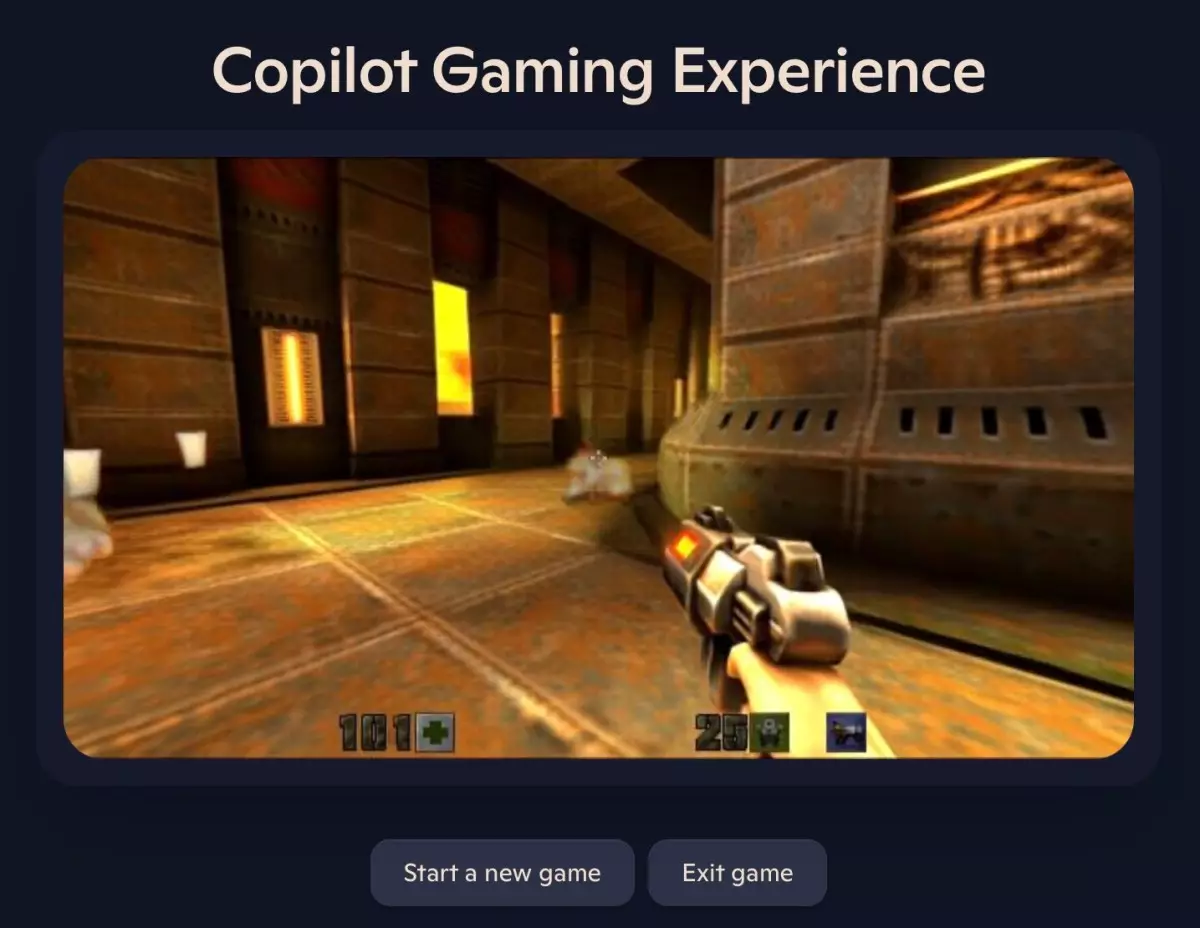Microsoft’s recent endeavor into browser-based gaming showcases a significant shift in how we interact with classic titles, specifically through the lens of artificial intelligence. The company has revived the iconic Quake II, allowing users to navigate through a single playable level powered by its Copilot AI platform. This innovative tech demo serves not just as nostalgia bait for seasoned gamers but as a fresh exploration into the potential of AI in creating dynamic gaming experiences. However, the excitement around this initiative warrants a critical examination of its execution and implications.
A Double-Edged Sword: Innovation vs. Experience
While the ambition behind integrating AI into gaming is commendable, the experience offered by Microsoft’s demo is far from the polished gameplay one might expect. The ability to control the game through keyboard inputs and witness the immediate effects of your actions portrays a groundbreaking concept; however, players quickly encounter limitations that remind us of the intricate artistry behind game design. The developers themselves admit that the experience is tailored more toward “playing the model” rather than engaging with a fully realized game.
One glaring issue is the AI’s apparent struggle with object permanence, which detracts from the immersion players seek, particularly in a game renowned for its fast-paced, action-oriented gameplay. Being able to teleport around the map simply by shifting your gaze may incite a few chuckles, but it also underscores a fundamental lack of cohesiveness in how this AI model replicates a gaming experience. Instead of providing an authentic replication, it seems we are left with an experiment, essentially a simulation that occasionally misses the excitement of being fully engaged in the game world.
Critiquing the Naivety of Game Preservation
Austin Walker’s critique of Microsoft’s ambitions sheds light on a misconception about AI’s role in game preservation, particularly regarding Phil Spencer’s assertion that AI could render classic games portable across platforms. Walker’s objections point to the complexities that make games like Quake II engaging in the first place. A game isn’t simply code; it’s a confluence of design choices, artistic elements, and mechanical interactions that create a specific play experience. When you strip down a game to its essentials, you risk losing the very essence that ignited its popularity.
The challenge lies in reconciling the capabilities of AI with the nuanced demands of game design and player expectations. If Microsoft aims to leverage AI for game preservation, a deeper understanding of what makes a game functionally and emotionally compelling is necessary. A gaming experience driven by quirky limitations might intrigue a specific audience but can hardly be deemed an adequate replacement for the carefully crafted adventures that defined generations.
Is AI the Future of Gaming or a Temporary Gimmick?
The tech industry is rife with aspirations of harnessing AI to redefine existing frameworks, but that doesn’t mean every application is inherently beneficial. With Microsoft’s Quake II experiment, we find ourselves at a crossroads: are we witnessing the dawn of an innovative way to engage with games, or is this merely a fleeting demonstration of technology that hasn’t yet matured into a compelling alternative?
For avid gamers and industry observers alike, the novelty of playing with AI sparks intrigue. However, it also taints the experience when an AI cannot replicate the serendipity of unforeseen gameplay moments or the emotional responses triggered by well-crafted game narratives. The excitement for AI-powered gaming must be tempered by a critical understanding of what is genuinely at stake—the essence of gaming itself.
Through experimentation and exploration, companies like Microsoft could pave the way for new frontiers in gaming. However, they must tread lightly, for a revolution in nostalgia should not come at the cost of the substantive experiences that have defined gaming culture. As we continue to push boundaries, it’s crucial to retain the heart of what makes gaming an enduring joy—immersive gameplay, rich narratives, and the thrill of uncharted territories.

